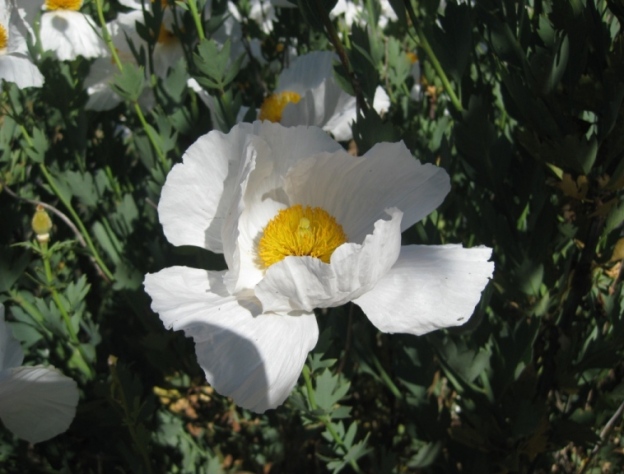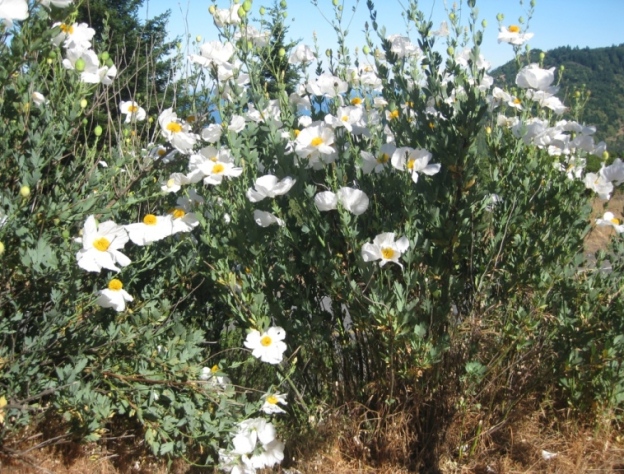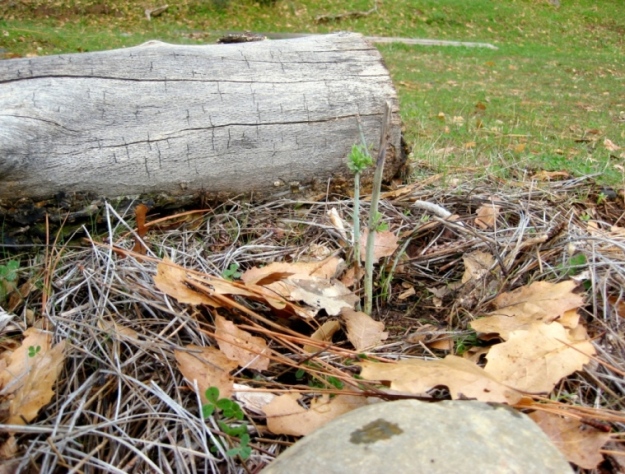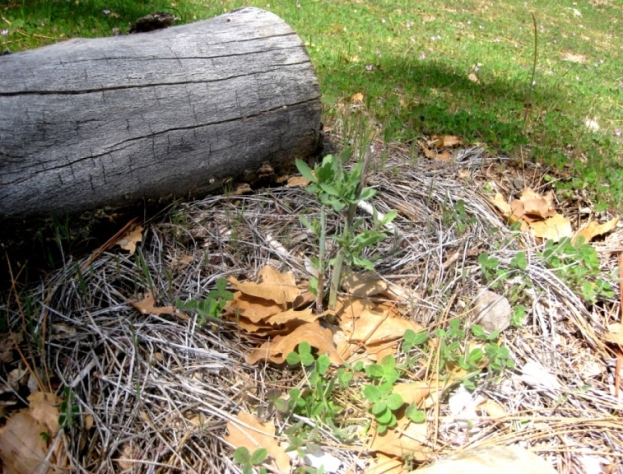It’s California Native Plant Week and I’m profiling a different California native each day that is on my particular wish list.
The first is Coulter’s Matilija poppy, Romneya coulteri.
The flowers of the tall and dramatic Matilija poppy, Romneya coulteri, look eggish, growing atop an 8-12 foot plant. A perennial, this grey-green leafed California native, prefers dry, disturbed soil near road cuts and along rocky streams.
In my area, it’s found beside the Merced River along Hwy 140 going into Yosemite, but I’ve seen it in Monterey, CA in the median strips and planting areas along the roadsides and as far north as Shelter Cove, CA. In my neighbor’s garden, it grows rampantly with sprinklers going summer long and suckers madly, multiplying in all corners of the place.
This photo was taken in Shelter Cove, CA where the Matilija (Ma-TILL-a-ha) grows wildly beside a gas station parking lot. Named for the Matilija River in Ventura County, CA, it was discovered in the 1860’s by Irish botanist, Thomas Coulter, who named it after his friend, John Thomas Romney Robinson, an astronomer. Coulter, collected and studied plants in Californa and Mexico.
This small sprout, acquired from the neighbor, is the third transplant I’ve tried. The first two died immediately and this one, although sulky, seems to be living a longer life, still not sure it likes its spot. This is a dry bank which used to be the driveway and I have the log there so our friends don’t drive over it when here camping on the command post hill.
It’s supposed to like fertile or sandy soil, with no water needed in summer. That’s the trick though because before it’s ‘established’ it may need water here where the summers are hot, hot, hot. I’m hoping that it will establish itself here and eventually be happy here on the mountain.
At Las Pilitas Nursery in California, in their usual quirky way, they describe the Matilija culture this way:
“Water well when planted, then once per week or so though first summer. They should kick by the next spring, when they do, stop watering. Kick?=grow to six feet or so, start spreading and flower. No amending, no fertilizer tabs, doesn’t even care about mulch. Of course in cool climates you can get away with all sorts of things…. “You may be interested to know that I bought one of these plants locally some years ago and despite the fact that my area,(Cheshire, England) could not be more different from California, it appears to be thriving. We have lots of wet weather, cold winds and overcast skies and the area is noted for its rich agricultural land, its roses and its turf!” Matilija poppies commonly go deciduous in summer or fall and come back in spring. If you buy one in it’s deciduous stage, it will look dead to an average gardener in Seattle. Nope, it’s just deadest stickus, normal mode for fall.”
Like I said, “Fingers crossed.”





5 comments